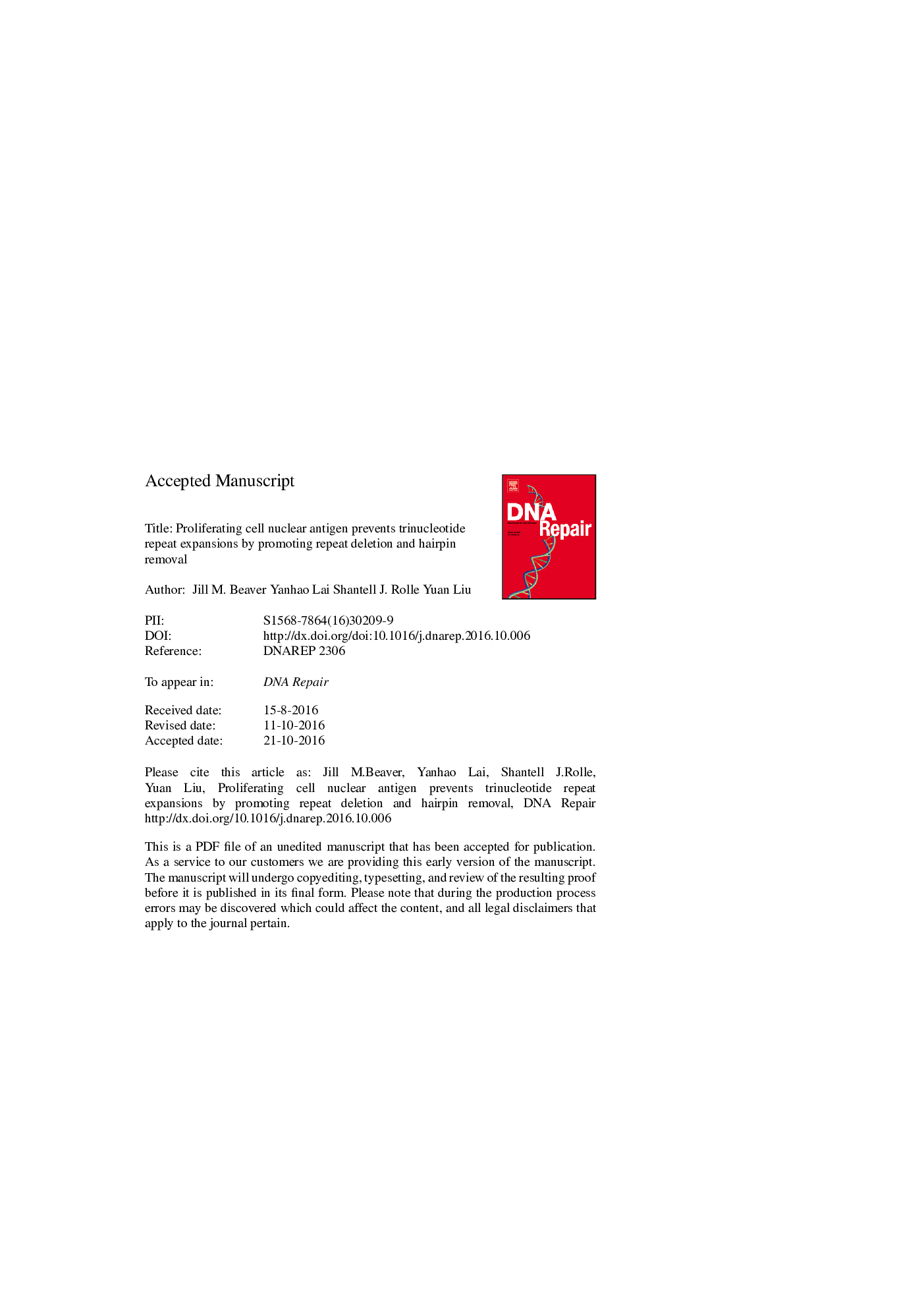| Article ID | Journal | Published Year | Pages | File Type |
|---|---|---|---|---|
| 5511034 | DNA Repair | 2016 | 39 Pages |
Abstract
DNA base lesions and base excision repair (BER) within trinucleotide repeat (TNR) tracts modulate repeat instability through the coordination among the key BER enzymes DNA polymerase β, flap endonuclease 1 (FEN1) and DNA ligase I (LIG I). However, it remains unknown whether BER cofactors can also alter TNR stability. In this study, we discovered that proliferating cell nuclear antigen (PCNA), a cofactor of BER, promoted CAG repeat deletion and removal of a CAG repeat hairpin during BER in a duplex CAG repeat tract and CAG hairpin loop, respectively. We showed that PCNA stimulated LIG I activity on a nick across a small template loop during BER in a duplex (CAG)20 repeat tract promoting small repeat deletions. Surprisingly, we found that during BER in a hairpin loop, PCNA promoted reannealing of the upstream flap of a double-flap intermediate, thereby facilitating the formation of a downstream flap and stimulating FEN1 cleavage activity and hairpin removal. Our results indicate that PCNA plays a critical role in preventing CAG repeat expansions by modulating the structures of dynamic DNA via cooperation with BER enzymes. We provide the first evidence that PCNA prevents CAG repeat expansions during BER by promoting CAG repeat deletion and removal of a TNR hairpin.
Keywords
Related Topics
Life Sciences
Biochemistry, Genetics and Molecular Biology
Biochemistry
Authors
Jill M. Beaver, Yanhao Lai, Shantell J. Rolle, Yuan Liu,
